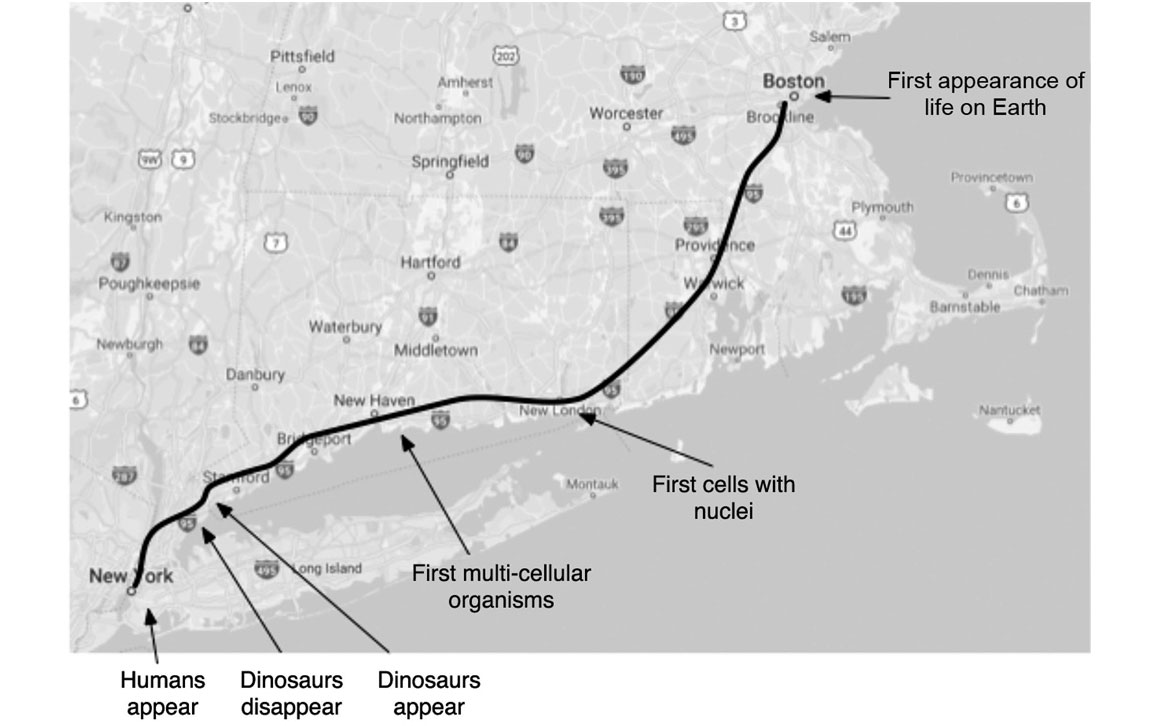
This Article From Issue
September-October 2022
Volume 110, Number 5
Page 314
WONDER: Childhood and the Lifelong Love of Science. Frank C. Keil. xvi + 315 pp. MIT Press, 2022. $35.
Why does grandpa have ear hair?” Just a few years ago my child was so insatiable to know “why” and “how” that we had to cut off her questions five minutes before bedtime or we would never get her to sleep. Now a soon-to-be fourth grader, she says that she dislikes school because “it’s not fun to learn.” I am dismayed. As a scientist and a parent, I have done everything I can to promote a love of learning in my children. Where did I go wrong?
A host of research findings indicate that my child’s experience is not unique. Developmental psychologists and educators such as Susan Engel at Williams College have noted that across the United States (and in many other countries) curiosity—defined as “spontaneous investigation and eagerness for new information”—drops precipitously in children by the fourth grade.
In Wonder: Childhood and the Lifelong Love of Science, Yale psychologist Frank C. Keil details the development of wonder—“a spontaneous passion that emerges early in childhood”—which he defines as “a drive to explore, discover, and understand [that] involves creating conjectures and entertaining possibilities.” He takes us on a journey from the realms of early development, when the cognitive gift of wonder drives common sense and scientific reasoning, through the drop-off in wonder that often occurs and its sources in the current structure of our educational systems and broader societal priorities, to the pitfalls of life in a society that devalues wonder. The book culminates with a call to action that includes myriad proposals through which we may better support wonder.

From Wonder.
Keil’s expertise on the psychology of cognitive development is matched by that of only a handful of other people. For more than four decades he has led the field, advancing our understanding of commonsense knowledge. He has described the ways in which humans construct abstract, coarse, causal representations of the world and has shown how these support later reasoning, enrichment, and wonder. His research has brought broader theories of cognitive development to bear on education, the STEM sciences, and public policy. The book Wonder touches on all of these areas.
Keil makes a distinction between wonder and a curiosity about facts that is satiated upon discovery. Wonder is a drive to understand causal mechanisms, and it feeds additional wonder as discovery unfolds. As Keil notes, children are particularly rich in wonder while they are rapidly developing a causal-mechanism understanding of the world in the preschool and early elementary school years. They engage in what Keil dubs the PHED cycle: Puzzling, Hypothesizing, Exploring, and Discovering. Furthermore, they are sensitive to the knowledge and goals of others, and they expertly leverage their voracious appetite for questioning. Children’s questions, particularly those that ask why and how, support the development and elaboration of a knowledge of causal mechanisms. That knowledge is rapidly abstracted and used to support day-to-day reasoning. (For example, children draw inferences about the complexity of an artifact from the number of functions it can perform.) Unfortunately, as Keil notes, “adults, including veteran teachers, greatly underestimate young children’s ability to learn about mechanisms.”

From Wonder
The idea that young children are already capable of forming rich, abstract causal theories of the world conflicts with our intuitions that cognitive development proceeds from the concrete to the abstract. The concept of the theory-building child scientist derives from the prominent “theory theory” of cognitive development. (The theory theory was put forward in the 1980s and 1990s by such titans in the field as Keil himself, Alison Gopnik, Susan Carey, Henry Wellman, and Susan Gelman. “The basic idea,” Gopnik says in a 2003 essay on the topic, “is that children develop their everyday knowledge of the world by using the same cognitive devices that adults use in science.”)
Developmental psychologists such as Elika Bergelson have pointed out that even infants comprehend abstract terms such as “uh-oh” or “all gone.” Caren Walker has shown that toddlers readily reason about abstract relational causes: In experiments in which children aged 18 to 30 months were asked to predict which pairs of blocks would cause a toy to play music when the blocks were placed upon the toy, subjects made successful predictions both when the rule was that “blocks must be the same” and when the rule was that “blocks must be different.” In my own lab, Katarina Begus and I have done experiments in which 18-month-olds first learned that certain individual objects always activated a toy when placed upon it, whereas certain other objects never activated the toy. Then a novel object was introduced and placed on the toy together with one of the objects whose ability or inability to activate the toy had already been demonstrated. When the novel object was placed on the toy along with an object known to activate the toy, the toy would always activate, and nothing could be learned about whether the novel object had the power to activate it. But when the novel object was placed on the toy along with an object already known to be unable to activate it, then activation or nonactivation of the toy would reveal the novel object’s power. We found that the brain activity of the toddlers increased more in the latter circumstance than in the former, suggesting that they were tracking abstract causal principles such as confounding. Computational cognitive scientists, who use mathematical modeling, computer simulation, and behavioral experiments to study the computational basis of learning and inference, have even shown how, in principle, abstract knowledge can precede concrete knowledge; Noah D. Goodman, Tomer D. Ullman, and Joshua B. Tenenbaum have dubbed this abstract-first learning the blessing of abstraction.
The book models its own principles of instilling wonder when it frames new ideas with questions that pique curiosity.
Thus even while children are still developing such cognitive capacities as the ability to hold several ideas in their head at once (working memory), the ability to resist a desire or impulse that is not needed in the moment (inhibition), and the ability to maintain focus on the task at hand (attention), they are quite capable of building rich scientific models of the world. They reason about myriad domains of knowledge. They have sophisticated intuitions about biological kinds such as growth and illness, physical kinds such as forces and matter, psychological kinds such as the goals and desires of other people, and more. In Wonder, Keil shows the reader that we can support ongoing wonder by focusing on children’s abilities to form these abstractions, and by working with children as collaborators while we model intellectual humility, engage in play, and encourage question-asking.
Keil maintains that if we fail to nurture a sense of wonder in ourselves, we run the risk of succumbing to misinformation. Below the level of awareness, we may continue to carry in our heads early intuitive theories that were incomplete or incorrect (an Earth-centered view of the Solar System, for example). If we fail to wonder about our own beliefs, then we lose the ability to recognize when they are insufficient to account for the data that surround us. Because we tend to believe we know more than we actually do (a phenomenon Keil terms the illusion of explanatory depth), we can feel falsely confident even when we lack actual mechanistic knowledge. Such illusions make us more easily fall prey to simplistic narratives such as those put forth by the pharmacological, chemical, and vitamin supplement industries about their products. When we don’t experience wonder, we are more likely to allow our own personal and emotional motivations to cloud our reasoning.
In many ways, Keil is like the polymaths he describes at various points in the book (Leonardo da Vinci and Richard Feynman, among others). Constant wondering made the lives of these extraordinary individuals rich in mechanistic understanding across many domains. Wonder for them worked against cognitive traps such as the illusion of explanatory depth and supported the drive to develop a deep mechanistic understanding of domains, which in turn supported generalization and analogy. Keil similarly has not only a deep mastery of the mechanisms of cognitive development but also a broader fascination with science and engineering more generally, as well as the humanities, history, and the arts. He calls on this depth and breadth as he regularly extends findings from developmental psychology to support his conclusions with richly detailed examples from, for instance, the work of Maria Montessori, the scientific career of polymath Thomas Young, and conversations about climate change.
In this way, the book models its own principles of instilling wonder. It frames new ideas with questions that pique the reader’s curiosity. For instance, when Keil notes that “most children’s spontaneous love of science fades by adulthood,” he asks, “Is it a problem with science itself? Does increasing familiarity with science and technology lead to disenchantment?” When he notes that “young children don’t always get things right,” he asks, “What does their error tell us about how they think and how they build their knowledge and understanding?” Later, he asks, “Why should children be so interested in mechanistic information early on?” and “How can adults come to avoid topics of such intrinsic interest to young children?”
The book also delves into historical narrative and prose. It highlights causal mechanisms, and it engages multiple domains of thinking. The inner workings of an internal combustion engine are described in an engaging narrative about a favorite past science teacher who had effective strategies for instilling wonder. The surprising fact that dogs do not require fruits in their diet, whereas humans—much to the dismay of my 8-year-old—must consume them, is one of many sprinkled into a section on embedding science prompts in public places. The details of how thunderstorms produce water that is more nutrient-rich than regular rain sweetens a section on how a greater understanding of science can enrich our lives and increase aesthetic appreciation. As I read, I found myself not only learning more about the psychology of wonder but also feeling greater wonder regarding science more broadly.
Keil builds his narrative on a rich foundation of scientific sources. The final chapter is the most hypothetical, providing several proposals by which we might recapture the wonder we are all born with. Parents and teachers can model wonder and use open-ended questions to engage children in conversations about objects or the natural world, taking care to let the child influence the direction the conversation takes. We can embed science in our communities: Psychologists Kathy Hirsh-Pasek, Roberta Golinkoff, and Brenna Hassinger-Das have created what they call “Thinkscapes,” using signage to transform urban supermarkets, bus stops, and walkways into opportunities for engaging wonder and inviting playful learning; a playground that they designed included activities that challenged the mind while encouraging interaction between caregivers and children. Keil also notes that it is critically important to fund basic science. The ability to involve the broader public in developing policies that support the basic sciences depends on the creation of a scientifically literate society.
A decline in wonder is not inevitable. Keil reminds us that we can embrace wonder as an enviable positive trait that exists in everyone. I value wonder deeply in my research and my life, and this book has given me hope by proposing a future for my children that will remain wonder-full.
American Scientist Comments and Discussion
To discuss our articles or comment on them, please share them and tag American Scientist on social media platforms. Here are links to our profiles on Twitter, Facebook, and LinkedIn.
If we re-share your post, we will moderate comments/discussion following our comments policy.